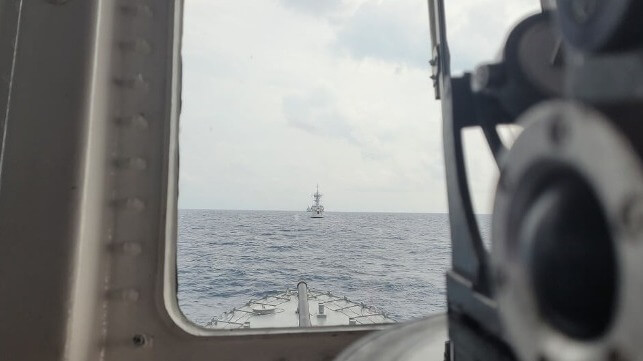ASEAN's First Naval Exercise: Signs of Regional Agency and Capability

The first Association of Southeast Asian Nations (ASEAN) joint military exercise, code-named ASEAN Solidarity Exercise 2023 (ASEX 2023), has just ended. Hosted by Indonesia from 19 to 23 September, it was the first ASEAN-wide military exercise not involving any external party.
The exercise was non-combat in nature, involving sea and land-based activities with Humanitarian Assistance and Disaster Relief (HADR), maritime security, search and rescue, medical evacuation, and anti-piracy components. All ten ASEAN members participated, with Brunei, Indonesia, Malaysia and Singapore deploying warships.
There are a number of reasons for countries to participate in military exercises, including to create trust between military forces and pursue interoperability.
The participation of all ASEAN members was significant, given that ASEAN is not a military alliance. There was initial scepticism about whether the exercise would occur after Cambodia raised concerns about the proposed exercise location in the South China Sea. In the end, Indonesia, as host, shifted the exercise to Batam and the Natuna Islands.
What objective does ASEX 2023 serve?
First, the exercise could be interpreted as a signal to major powers that ASEAN has a stake in the security of regional waters and the agency to secure them. Given the tension between China and the United States, there have been concerns among ASEAN defence officials that any China–US military conflict will affect regional waters.
In addition, ASEX 2023 was held at a time of increasing Chinese assertiveness in the South China Sea, from harassing several ASEAN members’ maritime activities within their exclusive economic zones (EEZ) to releasing a new map claiming nearly the entire South China Sea as its own.
In fact, the initial exercise location in the South China Sea suggests a signal by Indonesia to China that the latter’s claim to the entire South China Sea is contested.
Second, the exercise enabled ASEAN military forces to build trust with each other without the involvement of external forces. Trust leads to better communication, critical if ASEAN needs to harness the region’s military forces to deal quickly with a major crisis.
Currently, there are several regional multilateral arrangements to enhance maritime security. These include coordinated patrols between Malaysia, Indonesia and the Philippines to deal with security issues in the Sulu Sea, and the Malacca Straits Patrol Framework involving Indonesia, Malaysia, Singapore and Thailand to ensure the security of the Straits of Malacca and Singapore. But these are limited to specific geographical parts of the region and do not involve all ASEAN members.
Third, ASEX 2023 contributed to capability building for ASEAN naval forces. Interoperability is critical to executing humanitarian missions. The focus on non-traditional security, such as HADR and medical evacuations, was practical given the frequency of natural disasters in Southeast Asia. More than 50 per cent of global disaster deaths occurred in the region between 2004 and 2014.
Furthermore, interoperability among ASEAN military forces for humanitarian evacuation missions will be critical in any Taiwan contingency. More than 730,000 ASEAN nationals are working in Taiwan, and evacuating them to safety will be paramount in any future military conflict across the Taiwan Strait.
No single ASEAN member has sufficient air and sea-lift capabilities to evacuate their nationals from Taiwan. A joint ASEAN humanitarian mission may be necessary. Thus, ASEX 2023 could be the foundation to prepare ASEAN for such joint missions.
Do ASEAN’s military forces have the agency to conduct joint missions in a major crisis? Evidence from my PhD thesis research suggests yes.
Take the Third Indochina War (1978–1991) for example. Historical documents show several ASEAN leaders agreed in 1979 on a military contingency plan to defend Thailand after the Soviet-backed Vietnamese army marched into Cambodia. The Americans noted a joint plan between Singapore and Malaysia to ship their military equipment to the Thais. Indonesia and Singapore even considered deploying troops to Thailand if needed.
Then, in the early 1980s, ASEAN agreed to take a specific military measure to shape the outcome of the conflict in Cambodia, culminating in covert operations involving several ASEAN members and the CIA along the Thai–Cambodia border. These events demonstrated ASEAN’s potential agency to deal with a major regional crisis.
Whether ASEX 2023 is a practical avenue to prepare for a future contingency rests on two questions: will the exercise be repeated over the long term, even when the ASEAN chair has changed? If yes, will members agree to expand the scale and scope of future exercises to suit the evolving security threats? ASEAN must address these questions long after the hype over ASEX 2023 has ended.
The opinions expressed herein are the author's and not necessarily those of The Maritime Executive.
